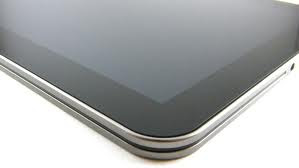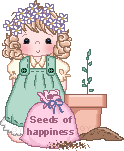Toshiba's AT200 tablet is the thinnest tablet in the world (for now). But how does its performance stack up against its rivals?
This is a 10.1-inch Android tablet that lays claim to being the world's thinnest. The AT200 has a good screen, and the tablet is super-thin and pleasingly light. The build quality leaves something to be desired, with the sharp edge-seam a particular worry. This tablet is worlds ahead of Toshiba's last-year's effort, but still has a long way to go before being a significant challenger to the iPad - super-light weight notwithstanding.
Review
When Apple released its latest iPad, critics were surprised to find the weight had gone up compared to last year's iPad 2 - after all, isn't progress represented by new products which are lighter and thinner than earlier models? Apple ignored this rule because its high-definition display needed a much bigger battery to power it.
So this must be the best timing for Toshiba and its new feather-light model. This is certainly a remarkably light tablet, weighing in at 558g, at par with some 7-inch-screened models. And the thinness of this, the thinnest tablet available, means it feels comfortable in the hand, even for long periods of reading.But the first snag you hit when you touch the AT200 - and it's a big one - is the edge. The curved corners are good, and contribute to the highly appealing look of the machine. It's one of the classiest-looking tablets around.
However, holding it reveals that the silvered edge stands very slightly proud of the display, which means there's an annoying sharp edge. You're not going to cut yourself, but it feels consistently uncomfortable in the hand. Even adjusting your grip is enough to scrape your palm.
In terms of connectivity, this is a nifty machine. There's a mini HDMI slot, micro-USB socket, earphone socket and even a slot for a microSD card which is neatly sculpted to make it easy to use. These are all on the left edge, when you hold the AT200 in landscape orientation, which it seems to suit.
The top edge is socket-free, the bottom has a quite frankly huge slot for the power cable. The right edge has three switches and buttons on it. You'll find a well-placed power button towards the top, a volume rocker and a screen orientation lock. You can lock this using an onscreen button in the settings menu, as well.
When the lock is on there's no onscreen representation of this: you have to peep round at the edge to see if the tell-tale red bar indicates that it's on. Also, there's no hardware button to launch the camera or snap a photo. The 5MP camera isn't bad, and the user interface on Android tablets is pretty good - more manual settings are possible than on the iPad, but it's straightforward enough to use easily. It seemed pretty good at focusing and snapping quickly, too.
The AT200 has a decent screen - of course it lacks the super high resolution of the Retina Display on the new iPad with its 264 pixels per inch. But at 149ppi, it beats the iPad 2, for instance. The tablet performs reasonably well, but it never seems especially speedy. It's not slow as such, it's just there are faster rivals around. And some of those rivals use Ice Cream Sandwich, the latest Android software, while this comes with Honeycomb - not the most current.
Battery life isn't that great on the AT200 either - which is a trade-off for having such a catwalk-thin model on your hands. You may feel it's a compromise worth making for all the weight you've saved, and at six or more hours you can get through much of a day. Moreover after a few days of not using it, you will find it's completely discharged.
Conclusion
The AT200 has lots going for it: if you want a tablet that looks stylish and is light enough for extended use, even when holding it with one hand, it's worth considering. But the other specs beyond its weight and slimness don't make it stand out. In fact it's the build quality that really stands out, and not in a good way. If Toshiba upgrades the software to the latest version - which shouldn't be hard as it's pretty much rocking vanilla Android - it will become a more attractive option.
Specifications
Camera: 5MP with LED Flash
Video: 720p@30fps
Display: TFT capacitive LCD touchscreen, 1,280 x 800 pixels,
10.1-inches
Dimensions: 256 x 176 x 7.7 mm
Internal Memory: 16/32GB storage, 1GB RAM
Card Slot: MicroSD up to 32GB
Colour: black, silver edging
Weight: 558g
Audio playback: 3.5mm Ear Jack & Speaker
Processor: 1.2GHz processor
Operating System: Android 3.2 (Honeycomb)
Battery Life: 8 hours
Keyboard: virtual


.jpg)























































